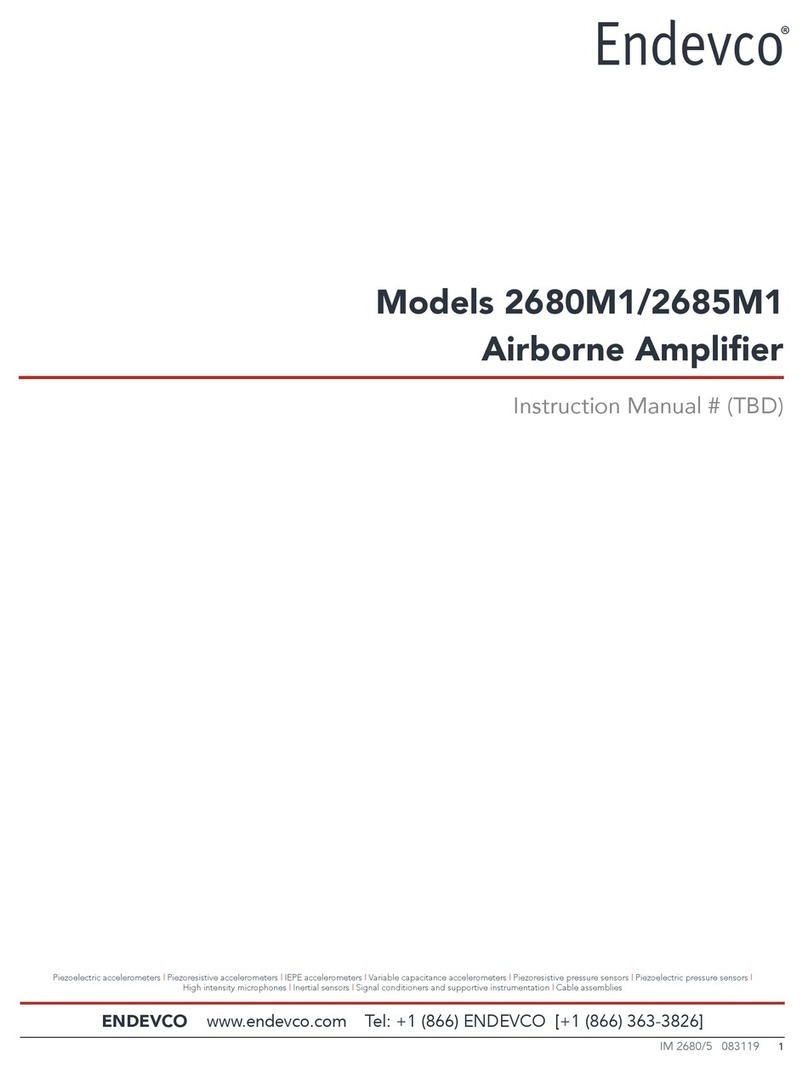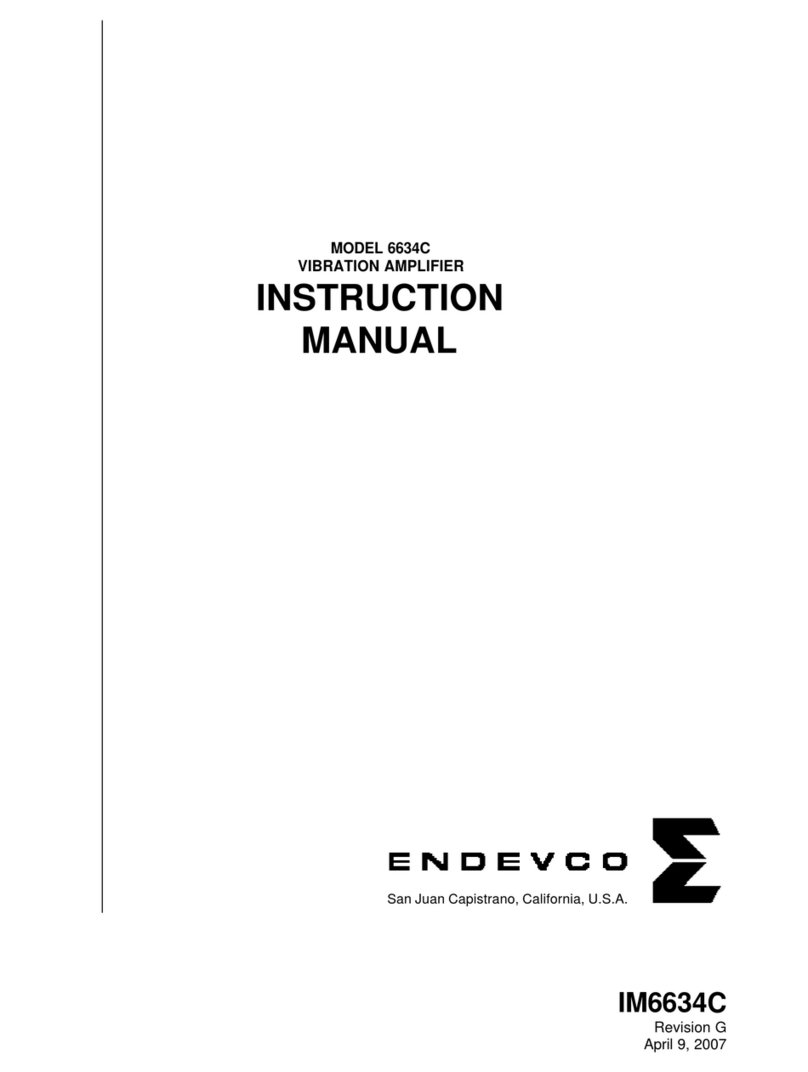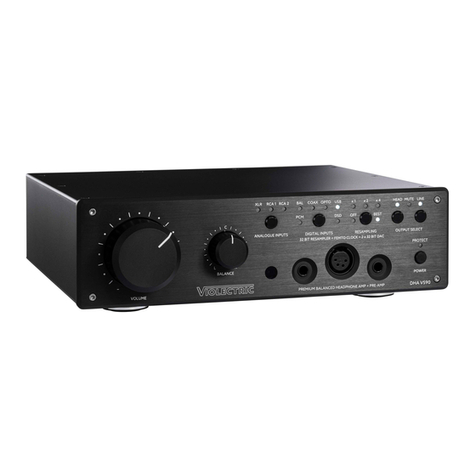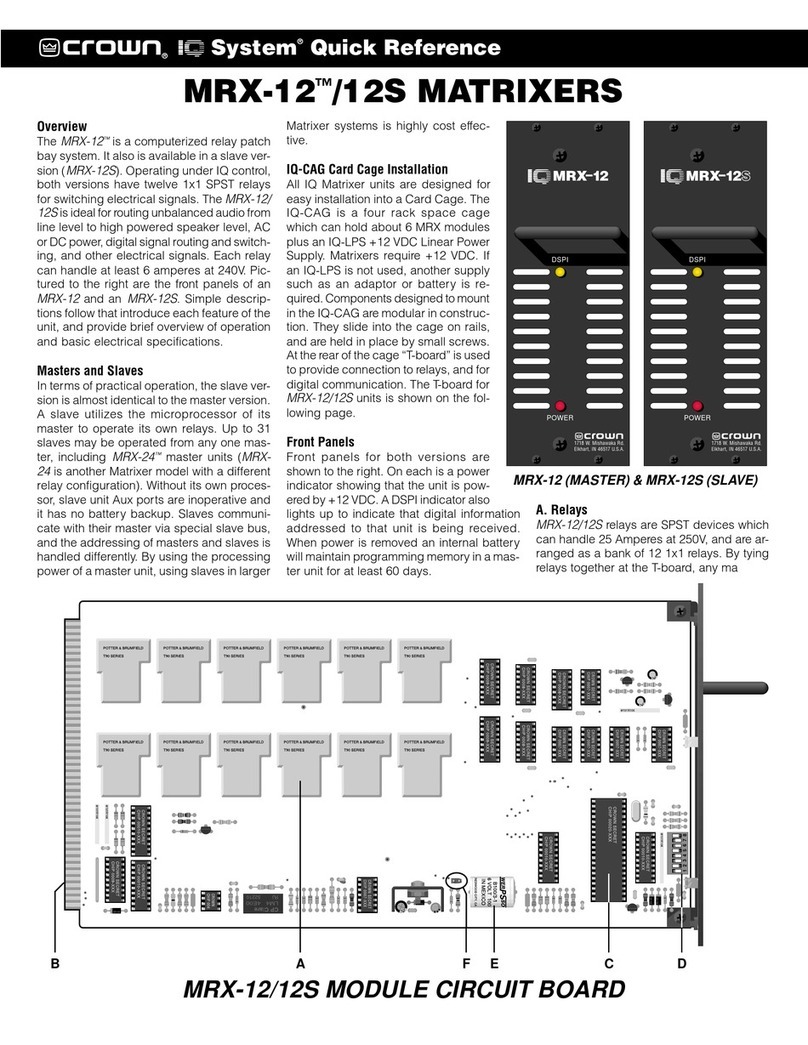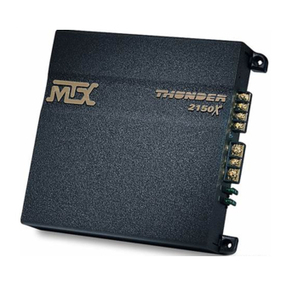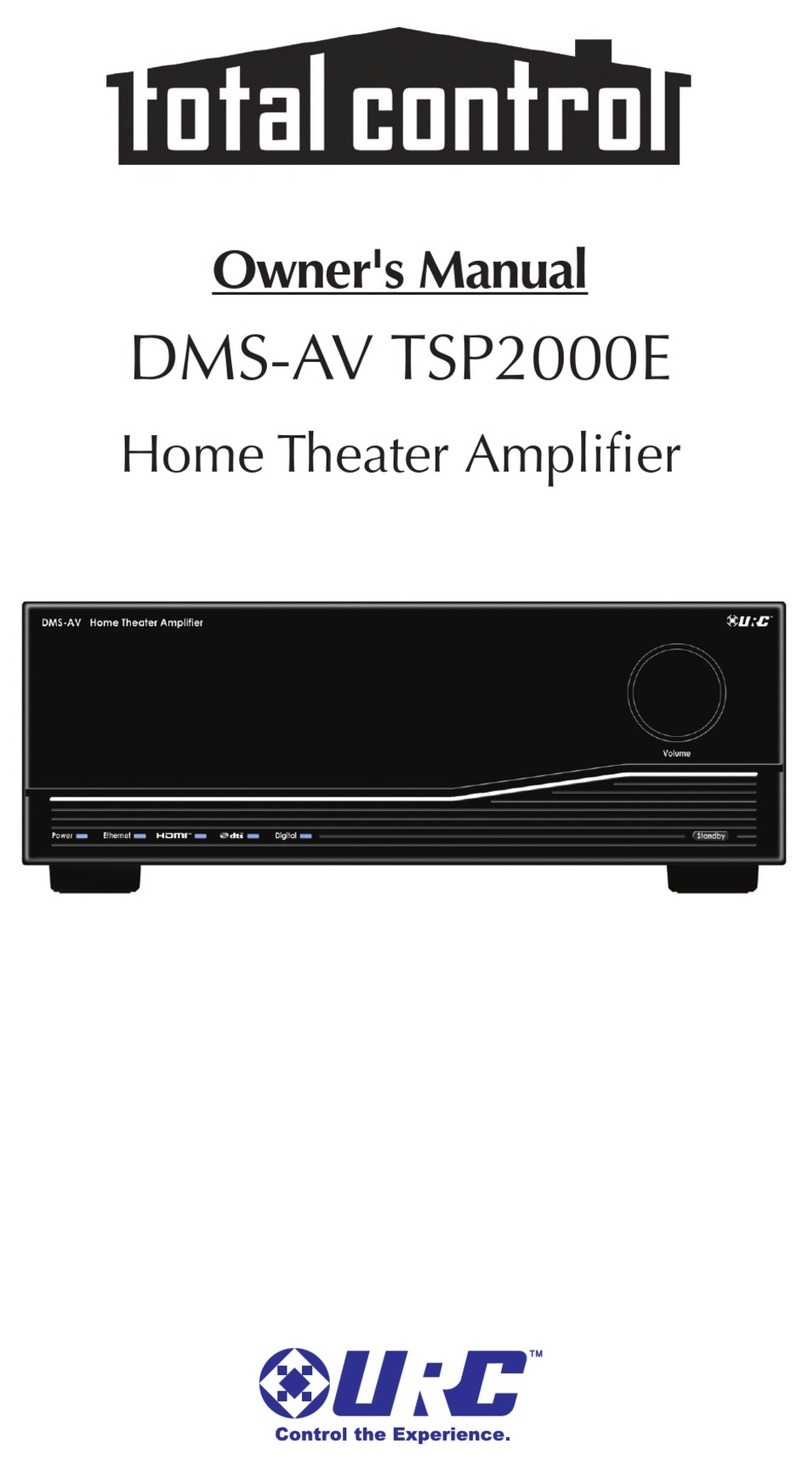ENDEVCO IM136 User manual

IM136
Revision D
30 September 1999
MODEL 136
DC AMPLIFIER
INSTRUCTION
MANUAL
San Juan Capistrano, California, U.S.A.

ENDEVCO MODEL 136 DC AMPLIFIER
INSTRUCTION MANUAL
IM136
Page 1
TABLE OF CONTENTS
SECTION 1: GENERAL DESCRIPTION PAGE
1.1 INTRODUCTION.........................................................................................................2
1.2 DESCRIPTION............................................................................................................3
1.3 FUNCTIONALCHARACTERISTICS..........................................................................3
1.4 KEYFEATURES.........................................................................................................3
SECTION 2: INSTALLATION, FRONT AND REAR PANEL DESCRIPTION AND OPERATION
2.1 INSTALLATION...........................................................................................................4
2.2 FRONTPANELDESCRIPTION..................................................................................5
2.3 REARPANELDESCRIPTION....................................................................................6
2.4 OPERATION...............................................................................................................12
2.4.1ChannelSelection.......................................................................................................12
2.4.2NormalMode............................................................................................................... 12
2.4.3Query/ProgrammingMode..........................................................................................13
2.4.4FunctionSelection.......................................................................................................13
2.4.5ExcitationVoltage........................................................................................................ 14
2.4.6SensorSensitivity........................................................................................................ 14
2.4.7OutputScaling............................................................................................................. 14
2.4.8LowPassFilter............................................................................................................ 15
2.4.9AutoZero..................................................................................................................... 15
2.4.10ShuntCalibration......................................................................................................... 15
2.4.11MonitoringState.......................................................................................................... 16
2.4.12SpecialModes............................................................................................................. 17
2.4.13FaultIndication............................................................................................................ 20
2.4.14RS-232Operation........................................................................................................20
2.4.15FilterOptionsandInstallation......................................................................................20
2.4.16SampleSetUp............................................................................................................ 21
2.5 RACK MOUNTING KIT ............................................................................................... 23
SECTION 3: ROUTINE MAINTENANCE AND HANDLING
3.1 INTRODUCTION.........................................................................................................24
3.2 FACTORYSERVICE...................................................................................................24
3.3 ORDERINGINFORMATIONANDACCESSORIES...................................................25
SECTION 4: APPENDIX
1. Model 31875-XXXX-O Filter Data Sheet 26
2.SerialCommunication......................................................................................................... 27
LIST OF FIGURES
FIGURES
1. FrontPanel.................................................................................................................. 5
2. RearPanel(ACInputpower)......................................................................................6
3. RearPanel(DCInputpower)......................................................................................7
4. BlockDiagram,Model136..........................................................................................7
5. RS-232SerialCommunicationBlockDiagram............................................................8
6. RJ-11ModJack,Frontview........................................................................................9
7. 9Pin"D"InputConnectorPinAssignment..................................................................9
8. TypicalBridgeConnection...........................................................................................11
9. TypicalBridgeConnectionwithRemoteSensing........................................................11
10. FilterModuleLocation.................................................................................................21

ENDEVCO MODEL 136 DC AMPLIFIER
INSTRUCTION MANUAL
IM136
Page 2
SECTION 1: GENERAL DESCRIPTION
1.1 INTRODUCTION
ENDEVCOhasremainedaleaderinthevibrationmeasurementfieldsince1951,andhas
contributed many firsts in vibration sensor design. These include: the first piezoelectric
accelerometer capable of continuous operation from cryogenic temperatures up to +750°F,
the first shear design accelerometer and the world's smallest piezoelectric accelerometer. To
support a broad family of vibration transducers, ENDEVCO has provided a wide variety of
signal conditioners, including the first transistorized charge amplifier, the first computer-
programmable charge amplifier and the first airborne vibration monitoring system that is
based on a true digital tracking filter.
SIGNAL CONDITIONERS
Tosupporttheuseofitssensorsinlargescaletesting,ENDEVCOhasdevelopedseveral
generations of signal conditioner systems. Until recently, a state-of-the-art vibration
laboratory set up consisted of a rack of manually controlled signal conditioners. These signal
conditioners have manually controlled switches and knobs, to set full scale ranges, sensitivity
and filter corners and the set up information is recorded by hand.
COMPUTER CONTROLLED SIGNAL CONDITIONERS
Toeliminatetheriskofincorrectamplifiersettings,ENDEVCOhaspioneeredtheconceptof
computer controlled signal conditioners. The first generation was the Multi-channel Amplifier
Control system (MAC). The second generation was the Computer Controlled Amplifier
Systems (CCAS). The CCAS family consists of five different systems that use the same rack
and digital interface assemblies with different analog boards. These units receive their setup
commands over an IEEE-488 interface bus from a computer/controller, so that tests can be
pre-programmed. In addition, these units provide comprehensive self-test and self-calibration
capabilities, which greatly improves the reliability of the test data. User feedback is indicated
that these units pay for themselves quickly by shortening test cycles, preventing retests and
eliminating over-testing.
MANUAL/COMPUTER CONTROLLED SIGNAL CONDITIONERS
Theexperiencegainedinthefirsttwogenerationsofcomputercontrolledamplifiershasnow
been applied to a third generation product line: the programmable bridge conditioner and the
programmable laboratory signal conditioner. These units are independently controlled and
each unit contains its own power supplies for single channel integrity.
TheModel136,hasbothmanualandcomputerprogrammablefeatures.ThisDCAmplifieris
an example of Endevco's commitment to improving the state-of-the-art in sensory
measurements. The new generation is smaller with more features and will continue to be
expanded to meet an ever widening range of application requirements.

ENDEVCO MODEL 136 DC AMPLIFIER
INSTRUCTION MANUAL
IM136
Page 3
1.2 DESCRIPTION
TheENDEVCO
®Model 136 DC Amplifier is a three-channel signal conditioner designed for
use with Piezoresistive (PR) accelerometers, Variable Capacitance (VC) accelerometers, and
pressure transducers. The unit provides an AC output voltage proportional to the voltage
input, and is designed to be powered by 90-240 VAC {with a 9-18 VDC option also
available(136-1)}.
TheEndevcoModel136hasafixed10Hz4-poleButterworthhigh-passfilterthatcanbe
selected or bypassed. It has a plug-in 4-pole low pass filter whose corner can be set by an
internal header module, which offers multiple corner frequencies. {See Section 2.4.15 Filter
Options and Installation and Appendix 1, (Endevco Model 31875-XXXX-O)}.
Figure4showsadetailedcircuitblockdiagramfortheunit.
FilteroptionsareavailabletomeetthefiltercornerrequirementsforJ211andISO6487.The
specific filter corners available are: 300 Hz and 1,650 Hz. {See Section 2.4.15 Filter Options
and Installation and Appendix 1, (Endevco Model 31875-XXXX-O)}.
Uptothree(3)Model136unitscanbeinstalledina19”rackusingENDEVCOModel31979
Rack Mounting Kit.
1.3 FUNCTIONAL CHARACTERISTICS
TheEndevcoModel136canbemanuallyprogrammedfromthefrontpanel(Figure1)by
means of a “Select Channel” push-button, three (3) “Channel LEDs”, a “Select Function”
push-button, seven (7) “Function LEDs” indicating which function has been selected by the
“Select Function” push-button (referred to in this document as the “function LEDs”), a four (4)
character LED display to show the state of each function, four (4) “EDIT” push-buttons to
change the entries in the LED display, and three (3) LEDs indicating if there are any faults in
any of the channels (referred to in this document as the “Fault LEDs”).
Theunithastwomodesofoperation:(1)Normaland(2)Query/Programming.IntheNormal
mode of operation, the unit can be in (a) Monitoring State, or (b) No-Monitoring State. While in
the Normal mode of operation, the selected state will apply to all three channels
simultaneously.
Theunitwillstorethesettingsforallofthefunctionsinitsinternalmemoryandatpower-upit
will automatically restore the settings from the last session.
1.4 KEY FEATURES
Thefollowingaresomeofthehighlightfeatures:
•Three-channelDCDifferentialVoltageAmplifier
•100kHzBandwidth(-3dBcorner)
•10VoltFullScaleOutput
•Auto-ZeroandShuntCalibration
•FourSelectableExcitationVoltageLevels
•Gainrangefrom0to1000
•RS-232SerialInterface
•OptionalLowPassfiltercornersavailable(standarddefaultfilteris
a10kHzButterworth)
•FilterOptionsAvailableforJ211andISO6487Requirements

ENDEVCO MODEL 136 DC AMPLIFIER
INSTRUCTION MANUAL
IM136
Page 4
SECTION 2:
INSTALLATION, FRONT AND REAR PANEL DESCRIPTION AND OPERATION
2.1 INSTALLATION
2.1.1 UNPACKING
TheEndevcoModel136DCAmplifierisshippedalongwithitsinstructionmanualinone
package. Carefully unpack and check all items for shipping damage. Report any obvious
damage to the carrier immediately. If the shipping container or cushioning material is
damaged, it should be kept until the contents of the shipment have been checked
mechanically and electrically. In any case, save the original packing materials for future
shipments of the hardware. Check each item of the shipment against the packing list. Notify
Endevco of any discrepancy.
Theequipmenthasbeeninspectedandtestedatthefactoryandisreadyforoperationwhen
received.
UnpacktheModel136andsetitonalevel,firmlysupportedsurface.Verifythatallstandard
and ordered optional accessories are included.
2.1.2 FILTER MODULE INSTALLATION OR REPLACEMENT
Forfiltermoduleinstallationorreplacement,seeSection2.4.15ofthismanual.
2.1.3 POWERING ON THE UNIT
ForACinputpower,installtheEW599powercordintotherearpowerconnectionofthe
Model 136. (See Figure 2, Rear Panel, AC input power.)
ForoptionalDCinputpower(Model136-1),installthe+9to+18VDCinputpowersourceinto
the DC input power connector, located on the rear of the Model 136-1. (See Figure 3, Rear
Panel, DC input power.)
2.1.4 KEY PARAMETERS
ThestandardunithasanACinputvoltagerequirementfrom90to264VAC,50to60Hz
(Universal Input). No jumpers or changes to the unit's power supply are required for input
power meeting this requirement.
TheModel136"-1"optionisaDCpoweredversionthatacceptsaninputvoltagerangefrom
+9 to +18 VDC.
Powerdissipationforeitherthestandardor-1versionis9wattstypical.
1. PhysicalCharacteristics
Dimensions5.57"x2.52"x12"
Weight 4lbstypical
CaseMaterialBlackAluminumCover,MediumGrayPlasticBezel
Current 1Ampmaximum

ENDEVCO MODEL 136 DC AMPLIFIER
INSTRUCTION MANUAL
IM136
Page 5
2.2 FRONT PANEL DESCRIPTION
ShowninFigure1istheModel136frontpanel.ThefrontpanelisaMylaroverlay,adhesively
attached to the front panel aluminum plate. The Mylar overlay has cutouts for the six push
buttons, and clear windows for 13 LED's and the 4-digit panel meter. Each push button and
LED are described as follows:
Figure1Item1,isthe"SelectFunction"pushbuttonthatcontrolsthefunctionslistedbelowit.
Pressing the Select Function push button scrolls through the LED's. The function selected can
be modified while the LED is flashing, located to the right of the associated function.
Figure1Item2,isthe"SelectChannel"pushbutton.Pressingthispushbuttonsequentially
selects channels one to three, which is used for set up and display of data on the digital panel
meter. The appropriate channel's LED remains illuminated until a different channel is selected.
Figure1Item3,istheLEDforchanneloneofthethreechannelunit.TheLEDilluminated
corresponds to the channel that is actively being set up or data displayed on the DPM.
Figure1Item4,isthedigitalpanelmeter(DPM).TheDPMdisplaysalpha-numericsforthe
appropriate "Select Channel" selected and is used to display the channel set up and for actual
data display. The DPM has an accuracy of ± 10%. (See Section 2.4, Operation and sub-
sections contained, for specific push button abilities.)
FUNCTION OFF LED ON
Voltage Exc. (V) OFF ON
Sensitivity (mV/ EU) Edit
Output Scaling (mV/ EU) Edit
LP Filter ( kHz) OFF ON
Auto -Zero OFF ON
Shunt Calibration OFF ON
Monitoring State OFF ON
DC Differential
Voltage Amplifier
Model136 Select Function
Edit
123
1 23
FAULT
Channel
S e le c t
Cha nnel
13
2
78
9
1011
4
5
6
Figure 1
Figure1Items5,6,7,and8correspond,respectivelytothe"Up","Right","Down"and"Left"
Edit push buttons. These push buttons are used to change the entries on the digital panel
meter and are used in conjunction with the appropriate "Select Function" parameter to be
programmed. (See Section 2.4, Operation and sub-sections contained, for specific push
button abilities.)
Figure1Item9,isoneofsevenFunctionparametersLED'sthatisselectable/programmable.
The flashing LED identifies the function that is actively capable of being set up or modified at
that time.

ENDEVCO MODEL 136 DC AMPLIFIER
INSTRUCTION MANUAL
IM136
Page 6
Figure1Item10,isalistof"Functions"thatareprogrammableforeachchannel,whichare
selected by the "Select Function" push button and are set up or modified with the four "Edit"
push buttons.
Figure1Item11,arethe"Fault"LED's.TheilluminatedLEDindicatesthatparticularchannel
is in the ISOTRON mode, the current excitation is on and there exists a short or open circuit
for the input.
2.3 REAR PANEL DESCRIPTION
ShowninFigure2istherearviewoftheModel136.
Figure2Item1,isthestandardACinputpowerconnector.ThesuppliedEndevcopower
cable, PN EW599, is connected to this connector. (Note: The acceptable input power is 90
to 264 VAC, 50/60 Hz. No jumpers or adjustment is required for input voltages within this
range. The unit doe not have an on/off power switch. )
Figure2Item2,isastandardBNCconnectorusedfortheoutputfromeachchannel.
Figure2Item3,isablocked-offareaforasinglechannel,depictedischannel3.The
channels correspond to the front panel channels 1, 2, and 3.
Figure2Item4,istheinputconnector.Thisisastandard9-pin"D"Femaleconnector.
Figure2Item5,istheRJ-11ModularJack,FrontView.(PleaseseeFigures5,6andSection
2.4.7. for the RS-232 information.)
RS-232
100/115/230V~
.5/.5/.25A
50/60Hz
Model 136: DC Differential Voltage Amplifier
OUTPUT
CHANNEL 3
OUTPUT
CHANNEL 2
OUTPUT
CHANNEL 1
Input and Excitation
12 3
4
5
Input and ExcitationInput and Excitation
Figure 2

ENDEVCO MODEL 136 DC AMPLIFIER
INSTRUCTION MANUAL
IM136
Page 7
Figure3istheoptionalModel136-1rearpanelview.Item1,istheDCinputpower
connector. The input power requirements are: 9 to 18 volts DC and a maximum current of 1
amp. The input connector is a 760 Plug style.
Model 136-1: DC Differential Voltage Amplifier
CHANNEL 3
Input and Excitation
RS-232
CHANNEL 2
OUTPUT
CHANNEL 1
9-18 VDC
1
OUTPUTOUTPUT
Input and Excitation Input and Excitation
Figure 3
Instrumentation
Amplifier
(1, 10, 100)
9-pin "D" Connector
Programmable
Gain: 0 to 10
Offset Adjustment
BNC
Excitation
Voltage
(0,5, 10, 15 VDC)
PSEN +
RSH
S +
S-
PSEN -
P +
4-pole Butterworth
Low-Pass Filter
-15 VDC
1
7
3
8
6
5
4
2
9Guard
P -
Figure 4
Figure 4 is the Model 136 block diagram.

ENDEVCO MODEL 136 DC AMPLIFIER
INSTRUCTION MANUAL
IM136
Page 8
Tx
Rx
EJ807
Adapter RJ11 RJ11
RJ11
Tx
Rx 133 or 136
3Channel
Amplifier
2
4
5
2
4
5Tx
Rx 133 or 136
3Channel
Amplifier
2
4
5Gnd
2
3
5
DB9F
To PC
Controller
Figure 5
Figure 5 is the block diagram for the RJ-11 RS-232 computer control connector.

ENDEVCO MODEL 136 DC AMPLIFIER
INSTRUCTION MANUAL
IM136
Page 9
RX
Digital Ground
Digital Ground
123456
Not Used
TX
Analog Ground
Figure6
Figure 6 is the RJ-11, Modular Jack, Front View RS-232
RJ11 Pin Assignment:
Pin1:AnalogGround
Pin2:TX(connectstoRXincomputer)
Pin3:NotUsed
Pin4:RX(connectstoTXincomputer)
Pin5:DigitalGround
Pin6:DigitalGround
Pin 1
Pin 6
Figure 7
9 Pin "D" Input Connector Pin Assignment
P/N
Description
Pin1: Psen+ExcitationSense
Pin2: -15VDC
Pin3: ShuntCal(RSH)
Pin4: S-SensorInput
Pin5: S+SensorInput
Pin6: Psen-ExcitationSense
Pin7: P+ExcitationVoltage
Pin8: P-ExcitationVoltage
Pin9: Guard/Shield

ENDEVCO MODEL 136 DC AMPLIFIER
INSTRUCTION MANUAL
IM136
Page 10
WARNING OF POSSIBLE CATASTROPHIC DAMAGE TO SENSORS
Up to 24 VDC may be temporarily present on the excitation lines (P+: pin 7, and P-: pin 8) during the first
12 seconds after applying power to the unit. To avoid this, the excitation sense lines (PSEN+: pin 1,
PSEN-: pin 6) must be connected as shown in figure 5 or figure 6. This temporary high voltage may
damage the sensor connected to the input of the unit.
The Model 136 is designed to restore the last excitation voltage programmed into it at power-up. Sensors
could be damaged if the unit was previously set to an excitation voltage (i.e. 15 V) that is higher than the
maximum excitation voltage rating for the sensor.
If the user is not sure what excitation voltage was last selected, the Model 136 should be powered-up and
the excitation voltage verified prior to connecting a sensor to the unit.

ENDEVCO MODEL 136 DC AMPLIFIER
INSTRUCTION MANUAL
IM136
Page 11
P+
P-
S+
S-
7
5
8
4
P+
P-
S+
S-
7
5
8
4
1
6
PS EN +
PS EN -
1
6
PS EN -
PS EN +
Figure 9
Typical Bridge Connection With Remote Excitation Sensing
Figure 8
Typical Bridge Connection
Model 136
9 Pin "D" Connector

ENDEVCO MODEL 136 DC AMPLIFIER
INSTRUCTION MANUAL
IM136
Page 12
2.4 OPERATION
TheEndevcoModel136canbemanuallyprogrammedfromthefrontpanel(SeeFigure1)by
means of a “Select Channel” push-button, three (3) “Channel LEDs”, a “Select Function”
push-button, seven (7) “Function LEDs” indicating which function has been selected by the
“Select Function” push-button (referred in this document as the “function LED's”), a four (4)
character LED display to show the state of each function, four (4) “EDIT” push-buttons to
change the entries in the LED display, and three (3) LEDs indicating if there are any faults in
any of the channels (referred in this document as the “Fault LED's”).
Theunithastwomodesofoperation:(1)Normaland(2)Query/Programming.IntheNormal
mode of operation, the unit can be in (a) Monitoring State, or (b) No-Monitoring State. While in
the Normal mode of operation, the selected state will apply to all three channels
simultaneously.
Theunitwillstorethesettingsforallofthefunctioninitsinternalmemoryandatpower-upit
will automatically restore the settings from the last session.
2.4.1 Channel Selection
Theuserselectswhichchannelisbeingprogrammedbypressingthe“SelectChannel”push-
button. Each press of the “Select Channel” push-button will sequentially turn-on one of the 3
“Channel LED's” located to the right of the “Select Channel” push-button indicating the
channel number selected for programming.
Theunitwillremainintheselectedmode/stateofoperation(normalorquery/programming)
while pressing the “Select Channel” push-button.
2.4.2 Normal Mode
1.MonitoringState
IntheMonitoringstateofoperationtheunittakesanRMSreadingofthesignalpresentatthe
output of the selected channel every 500 mSec and displays the value on the LED display in
Engineering Units (EU: the physical variable in RMS being measured by the transducer) or V
out in RMS. This state is activated by selecting either the "EU" or “V out” entry in the "Monitor"
Function selection.
Pressingthe“SelectChannel”push-buttonwhileintheMonitoringstateallowstheuserto
quickly view (sequentially) the signal levels at the output of each channel.
2.No-MonitoringState
TheNo-Monitoringstateallowsforlownoiseoperation.Thisisaccomplishedbynottaking
A/D readings from the outputs, and by placing the CPU in idle mode in order to minimize
power consumption and digital noise in the unit. The LED display will be turned OFF. This
state is activated by selecting the "OFF" entry in the "Monitor" Function selection.

ENDEVCO MODEL 136 DC AMPLIFIER
INSTRUCTION MANUAL
IM136
Page 13
2.4.3 Query/Programming Mode
TheQuery/ProgrammingModeallowsformanualprogrammabilityandqueryingofthe
programmable functions. This Mode is activated by pressing the “Select Function” push-
button.
Afunctionisqueriedbyselectingitusingthe“SelectFunction”push-button.Thecurrent
setting for the selected function will be displayed on the LED display. The entry in the LED
display is edited by using the four EDIT push-buttons (located just below the LED display.)
Thenewsettingwillbeimplementedintotheunithardwareassoonastheentryshownonthe
LED display is modified. The unit returns to the Normal mode of operation after 20 seconds of
inactivity (no push-buttons pressed) or after pressing the “Select Function” push-button while
the “Monitoring State” function LED is flashing.
2.4.4 Function Selection
Theuserselectswhichfunctionisbeingprogrammedbypressingthe“SelectFunction”push-
button. Each press of the “Select Function” push-button will sequentially make one of the
“Function LEDs” blink indicating the function is selected for programming.
Thefirstpressofthe“SelectFunction”push-buttonselectsthefunctionLEDthatwasselected
the last time that the unit was in Query/Programming Mode. The selected Function LED will
be blinking and the current setting will be displayed on the LED display. Each additional press
of the “Select Function” push-button selects the next function (corresponding Function LED
blinking) and the corresponding setting is displayed on the LED display. Pressing the “Select
Function” push-button while the “Monitoring State” function LED is flashing puts the unit
immediately back into Normal mode.
Thefollowingfunctionscanbeselectedforprogramming:(1)ExcitationVoltage,(2)Sensor
Sensitivity, (3) Output Scaling, (4) Low Pass Filter, (5) Auto-Zero, (6) Shunt Calibration, and
(7) Monitoring State.
Whenthefunctionisselected,thecorresponding“FunctionLED”willstayblinkinguntilthe
“Select Function” push-button is pressed again to select the next function. The LED display
will show the current setting for the selected function. The EDIT keys can then be used to
change the setting. If no buttons are pressed after 20 seconds, then the “Function LED” will
stop blinking and the unit will return to the normal mode of operation (monitoring or non-
monitoring state).
Each“FunctionLED”willremainOFForONduringthenormalmodeofoperation(andalso
immediately after selecting the next function) depending on the setting selected by the user
for the corresponding function.
Theusercanselectafunction,andthenusethe“SelectChannel”push-buttontoview/editthe
current setting for the selected function for each channel.

ENDEVCO MODEL 136 DC AMPLIFIER
INSTRUCTION MANUAL
IM136
Page 14
2.4.5 Excitation Voltage
Thisfunctionisusedtoenable/disabletheexcitationvoltageandalsotosettheamplitudeof
the excitation voltage. The up-down EDIT keys are used to select the input type. The following
messages will be shown sequentially on the LED display each time the up-down EDIT keys
are pressed: (1) “0.00”, (2) “5.00”, (3) “10.00”, and (4) “15.00”.
1. "0.00":Setexcitationvoltagelevelto0VDC.
2. "5.00":Setexcitationvoltagelevelto5VDC.
3. "10.00":Setexcitationvoltagelevelto10VDC.
4. "15.00":Setexcitationvoltagelevelto15VDC.
Theexcitationwillbesettothedesiredvoltagelevelafterthe“SelectFunction”keyispressed
or after the unit returns to the normal mode of operation.
The“FunctionLED”correspondingtotheExcitationVoltagefunctionwillremainOFFduring
the normal mode of operation if the user selected the “0 VDC” setting (excitation disabled).
The function LED will remain ON if the Excitation Voltage was enabled by selecting any of the
other settings.
2.4.6 Sensor Sensitivity
Thisfunctionselectionprovidesforprogrammingthesensitivityofthetransducer(inmV/EU).
The Endevco Model 136 uses this information to determine the gain needed to achieve the
required output scaling. The left-right EDIT keys select the number position in the LED
display, and the up-down EDIT keys increment or decrement the selected number.
Theusercanenterfour(4)significantdigitsrangingfrom0.001to9999.
2.4.7 Output Scaling
Thisfunctionselectionprovidesforprogrammingthedesiredscalingoftheamplifier’soutput
(in mV/EU). The left-right EDIT keys select the number position in the LED display, and the
up-down EDIT keys increment or decrement the selected number. The Endevco Model 136
determines the gain needed to achieve the required output scaling by using the following
equation:
Amplifier’sGain=
Output Scaling
Sensor Sensitivity
TheentryinOutputScalingdependsontheSensorSensitivitysettinganditwillautomatically
change to the lowest or highest limit if the current entry violates the following constraint:
0<
Output Scaling
Sensor Sensitivity < 1000
Theusercanenterfoursignificantdigitsrangingfrom0.01to9999limitedbytheabove
constraint.
The“FunctionLED”correspondingtotheOutputScalingfunctionwillbesettoOFFwhenthe
unit returns to the normal mode of operation.

ENDEVCO MODEL 136 DC AMPLIFIER
INSTRUCTION MANUAL
IM136
Page 15
2.4.8 Low Pass Filter
Thisfunctionselectionprovidesforenablingordisablingthebuilt-in4-poleButterworthLow
Pass filter (set by header module 31875). The following messages will be shown sequentially
on the LED display each time the up-down EDIT keys are pressed: (1) “OFF”, and (2)
“XX.XX”.
1."OFF":Low-passfilterdisabled.
2."XX.XX":Low-passfilterenabled.XX.XXrepresentsthecornerfrequencyinkHz.
The“FunctionLED”correspondingtotheLow-PassFilterfunctionwillremainOFFduringthe
normal mode of operation if the user selected the “OFF” setting (filter disabled). The function
LED will remain ON if the low-pass filter was enabled by selecting the “XX.XX” setting. XX.XX
could be a value from 0.01 (10 Hz) to 80.00 (80 kHz). The unit displays the actual corner
frequency in each channel by reading an ID Voltage (VID) set by the header module that sets
the -3dB corner frequency of the low-pass filter. VID ranges from 0 to 2 VDC. The unit uses
the table shown in section 10.0 to convert the ID Voltage into the corner frequency (in Hz).
2.4.9 Auto-Zero
ThisfunctionselectionprovidesforautozeroingtheDCoutputvoltage.Thefollowing
messages will be shown sequentially on the LED display each time the up-down EDIT keys
are pressed: (1) “OFF”, and (2) “ON”.
1."OFF":TheunitsetsalloftheinternalDCoffsetadjustmentstoneutral.
2."On":TheunitsetstheDCoutputvoltagetozerotowithin±10mVDC(zerowill
depend on the DC voltage imbalance present at the input of the amplifier). If the unit is unable
to set the DC output voltage to zero, the setting will revert back to “OFF”. This setting will
change to “OFF” if Auto-Zero is set to “On” and the user makes a change in any of the
following functions: Excitation Voltage, Sensor Sensitivity, Output Scaling, and Low Pass
Filter.
3."Auto":TheunitsetstheDCoutputvoltagetozerotowithin±10mVDC(zerowill
depend on the DC voltage imbalance present at the input of the amplifier). If the unit is unable
to set the DC output voltage to zero, the setting will revert back to “OFF”. If Auto-Zero is set to
“Auto” and the user makes a change in any of the following functions: Excitation Voltage,
Sensor Sensitivity, Output Scaling, and Low Pass Filter, then the unit will first set Auto-Zero to
“OFF” before executing the change setting of the function. The setting will be set back to
“Auto” after the user presses the “Select Function” key to select the next function.
The“FunctionLED”correspondingtotheAuto-ZerofunctionwillremainOFFduringthe
normal mode of operation if the user selected the “OFF” setting. The function LED will remain
ON if the Auto-Zero function was set to the “On” or “Auto” setting.
2.4.10 Shunt Calibration
Thisfunctionselectionprovidesforconnectingtheshuntcalibrationresistorinstalledinthe
input connector to either the positive (PSEN+) or negative (PSEN-) terminals. The choices
are:
1."OFF":Theshuntcalibrationresistorisdisconnectedfromthesensor.
2."RSH":TheshuntcalibrationresistorisconnectedtothePSEN+line.
3."RSH-":TheshuntcalibrationresistorisconnectedtothePSEN-line.
The“FunctionLED”correspondingtotheShuntCalibrationfunctionwillremainOFFduring
the normal mode of operation if the user selected the “OFF” setting. The function LED will
remain ON if the Shunt Calibration was enabled by selecting any of the other settings.

ENDEVCO MODEL 136 DC AMPLIFIER
INSTRUCTION MANUAL
IM136
Page 16
2.4.11 Monitoring State
Thisfunctionselectionprovidesforprogrammingthedesiredstateoftheamplifierwhileinthe
normal mode of operation (described in 2.2 and 2.3 above). The following messages will be
shown sequentially on the LED display each time the up-down EDIT keys are pressed: (1)
“EU”, (2) “Vout” and (3) “OFF”.
1."EU":RMSvoltageatVoutismonitoredandshownontheLEDdisplayinEUatthe
rate of approximately two (2) times per second. The values displayed on the LED
display range from 0.000 to 9999. The value shown on the LED display is computed as
follows:
Display(EU)=
VRMS at Output
Output Scaling
2."Vout":RMSvoltageatVoutismonitoredandshownontheLEDdisplayinVRMSat
the rate of approximately two (2) times per second. The values displayed on the LED
display range from 0.00 to 9.99. The value shown on the LED display is computed as
follows:
Display(VRMS)=VRMSatOutput
3."OFF":TheLEDdisplaywillbeturnedOFF.Thissettingprovidesthelowestnoise
performance.
The“FunctionLED”correspondingtotheMonitorfunctionwillremainOFFduringthenormal
mode of operation if the user selected the “OFF” setting. The function LED will remain ON if
monitoring was enabled by selecting any of the other settings listed in the table above.

ENDEVCO MODEL 136 DC AMPLIFIER
INSTRUCTION MANUAL
IM136
Page 17
2.4.12 Special Modes
Thespecialmodesarenotfrequentlyusedandtheymaybeselectedbypressingthe“Select
Function” key while simultaneously pressing a combination of multiple EDIT keys. The unit
must be in the normal mode of operation to enter any of the special modes of operation. The
table below shows the combination of the EDIT keys that need to be pressed to obtain the
desired special mode.
Mode EDIT keys
1. Addressing RIGHT
2. Error List LEFT
3. Reset UP
4. Store Setup in EEPROM DOWN
5. Test Display UP & LEFT
6. Recall Default Setup DOWN &
RIGHT
7. Calibration LEFT & RIGHT
8. Troubleshooting UP & DOWN
9. Not Assigned UP & RIGHT
10. Not Assigned DOWN & LEFT
1. Addressing by RS-232
Thisspecialmodeselectionprovidesforprogrammingtheaddressoftheunitusedfor
computer control through the RS-232 serial communication. The unit’s address applies to
all 3 channels (same address regardless of the channel selection).
Theunitdeterminesitsaddressatpowerupbyusingthefollowingalgorithm:
1)VID:AddressdeterminedbyIDvoltagesetinhardware(seetablein
section10.0)
2)MEM:Addressstoredinnon-volatilememory
3)READVID
4)IFVID=0THENAddress=MEM
5)IFVID>0THENAddress=VID=MEM
Thisspecialmodeisselectedbypressingthe“SelectFunction”keywhilesimultaneously
pressing the RIGHT EDIT key. The unit returns to the normal mode of operation
(Monitoring or Non-monitoring state) after pressing the “Select Function” key one more
time.
Whenthisspecialmodeisselectedthefirst“FunctionLED”willbeblinkingandtheserial
communication baud rate for the unit will be shown on the LED display. The baud rate can
be modified by using the EDIT keys. An additional press of the “Select Function” key will
make the second “Function LED” blink and the address of the unit will be shown on the
LED display. The address can be modified by using the EDIT keys only if VID = 0. The
new address will be set and stored into the internal non-volatile memory when the unit
returns to the normal mode of operation.
2. Error List
Thisspecialmodeselectionallowstheusertoretrievealistingofalloftheerrorsthatmay
be causing the failure LED to be ON.
Thisspecialmodeisselectedbypressingthe“SelectFunction”keywhilesimultaneously
pressing the LEFT EDIT key. The unit returns to the normal mode of operation (Monitoring
or Non-monitoring state) after pressing the “Select Function” key one more time.

ENDEVCO MODEL 136 DC AMPLIFIER
INSTRUCTION MANUAL
IM136
Page 18
Afterthemodeisselected,allofthe“FunctionLEDs”willbeOFFandthefirsterrorcode
will be shown on the LED display. The user may scroll through the list by using the UP
and DOWN EDIT keys.
3. Reset
Thisspecialmodeselectionallowstheusertoresettheunit(equivalenttoapower-up
initialization).
Thisspecialmodeisselectedbypressingthe“SelectFunction”keywhilesimultaneously
pressing the UP EDIT key. The unit returns to the normal mode of operation (Monitoring
or Non-monitoring state) immediately after initialization.
4. Store Setup in EEPROM
Thisspecialmodeselectionallowstheusertoforcetheunittostoreallofthefunction
settings into non-volatile memory.
Thisspecialmodeisselectedbypressingthe“SelectFunction”keywhilesimultaneously
pressing the DOWN EDIT key. The unit returns to the normal mode of operation
(Monitoring or Non-monitoring state) immediately after writing all of the function settings
into non-volatile memory.
5.Test Display
Thisspecialmodeselectionallowstheusertotestthedisplayboardbydisplayinga
different pattern on the LED indicators and the LED display every time any one of the
front panel buttons is pressed.
Thisspecialmodeisselectedbypressingthe“SelectFunction”keywhilesimultaneously
pressing the UP and LEFT EDIT keys. The unit returns to the normal mode of operation
(Monitoring or Non-monitoring state) after pressing the “Select Function” key one more time.
6. Recall Default Setup
Thisspecialmodeselectionallowstheusertorecallthedefaultfunctionsettings.
Thisspecialmodeisselectedbypressingthe“SelectFunction”keywhilesimultaneously
pressing the DOWN and RIGHT EDIT keys. The unit returns to the normal mode of
operation (Monitoring or Non-monitoring state) immediately after restoring all of the
default function settings.
Function Factory Default Setting
1. Excitation Voltage 0.00 (OFF)
2. Sensor Sensitivity 1.000
3. Output Scaling 1.000
4. Low Pass Filter XX.XX (ON)
5. Auto-Zero OFF
6. Shunt Calibration OFF
7. Monitoring State Vout
7. Calibration
Thisspecialmodeselectionallowstheusertomanuallycalibratetheunit.
Thisspecialmodeisselectedbypressingthe“SelectFunction”keywhilesimultaneously
pressing the LEFT and RIGHT EDIT keys. When this special mode is selected the first
“Function LED” will be blinking and the first calibration constant for the selected channel
will be shown on the LED display. The settings of all of the functions will be saved in non-
volatile memory when entering this mode.

ENDEVCO MODEL 136 DC AMPLIFIER
INSTRUCTION MANUAL
IM136
Page 19
Theuserselectswhichcalibrationconstantisbeingsetbysubsequentlypressingthe
“Select Function” key. Each press of the “Select Function” key will sequentially make one
of the “Function LEDs” blink indicating that the calibration constant is selected for
programming and the corresponding calibration constant will be shown on the LED
display.
Pressingthe“SelectFunction”push-buttonwhilethe“MonitoringState”functionLEDis
flashing places the unit back into Normal mode. The calibration constants will be stored
into the internal non-volatile memory when the unit returns to the normal mode of
operation. The settings for all of the functions will be restored using the new calibration
constants when the unit returns to the normal mode of operation.
A checksum for the calibration constants is also stored in non-volatile memory. The unit
will use this checksum at power up to verify that all calibration constants are good. The
unit will declare an error if the checksum test for the calibration constants fails.
Across-referencetablebetweenthecalibrationconstantsandthe“FunctionLEDs”is
shown below (the gain setting for each calibration constant is also shown):
Function LED Calibration Constant Gain
1. Excitation Voltage k1 for 100 < Gain < 1000 200
2. Sensor Sensitivity k2 for 10 < Gain < 100 20
3. Output Scaling k3 for 0 < Gain < 10 2
4. Low Pass Filter (not defined) 2
5. Auto-Zero (not defined) 2
6. Shunt Calibration k5 to calib. slope of A/D 1
7. Monitoring State k6 to calib. offset of A/D 1
8. Gain Calibration
Calibrationconstantsk1throughk4areusedtocalibratethegainoftheunit.Thisis
accomplished by applying a 300 Hz calibration signal into the Isotron input for k1, k2, and
k3, or into the Charge input for k4, and adjusting the calibration constant displayed on the
LED display until the desired output (input signal multiplied by gain) is obtained. The
amplitude of the input signal should be set to 30.0 mVRMS for k1, 0.300 VRMS for k2,
3.00 VRMS for k3.
9. A/D Calibration
Calibrationconstantsk5andk6areusedtocalibratetheAnalogtoDigitalconverterofthe
unit. The unit will determine these constants at power-up. The user can view the values of
these constants by selecting Function LED #6 for k5 (slope) or Function LED #7 for k6
(offset).
10. Troubleshooting Mode
ThisspecialmodeselectionallowstheusertocontrolanydigitalI/Oportfor
troubleshooting purposes.
Thisspecialmodeisselectedbypressingthe“SelectFunction”keywhilesimultaneously
pressing the UP and DOWN EDIT keys. Pressing the “Select Function” push-button while
the “Monitoring State” function LED is flashing places the unit back into Normal mode.
Table of contents
Other ENDEVCO Amplifier manuals
Popular Amplifier manuals by other brands
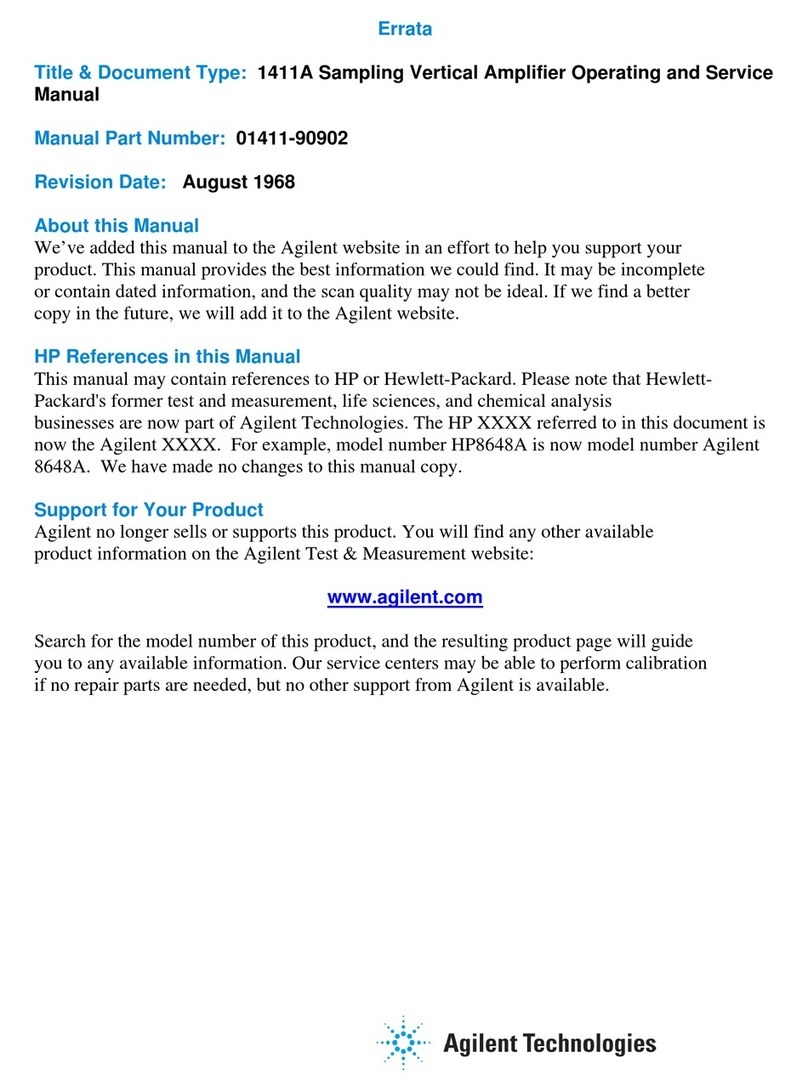
Agilent Technologies
Agilent Technologies Sampling Vertical Amplifier Operating and service manual
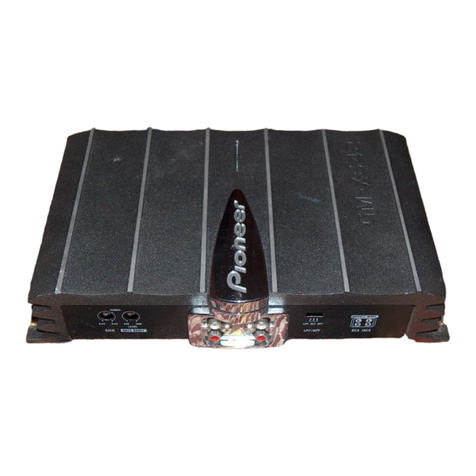
Pioneer
Pioneer GM-X642 owner's manual
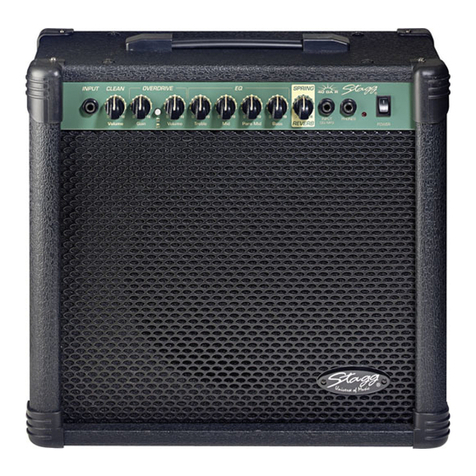
Stagg
Stagg 40 GA DSP USA user guide
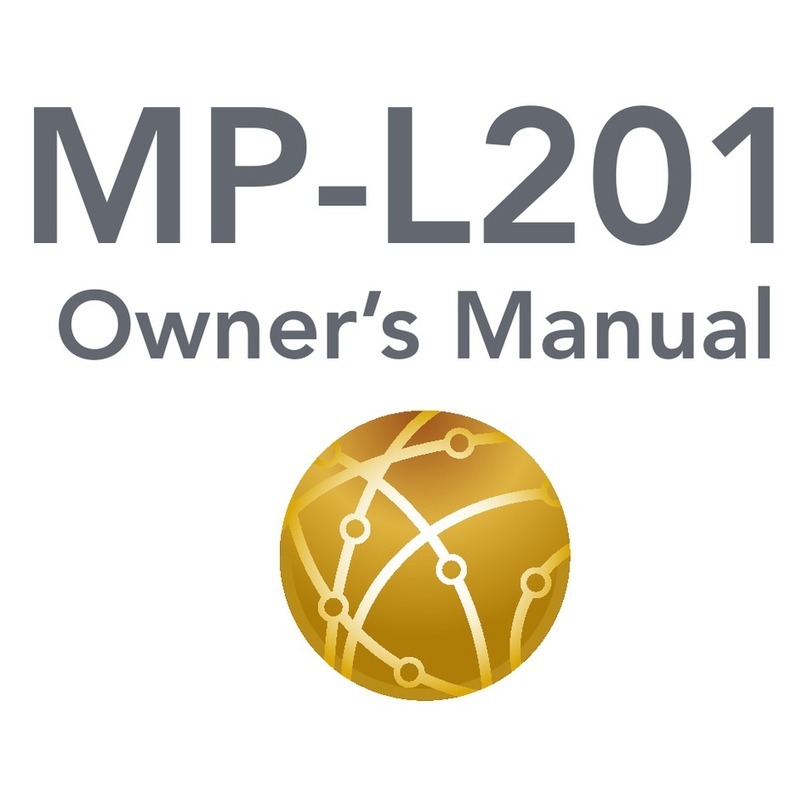
Vitus Audio
Vitus Audio MP-L201 owner's manual

Lab.gruppen
Lab.gruppen C 28:4 Technical data
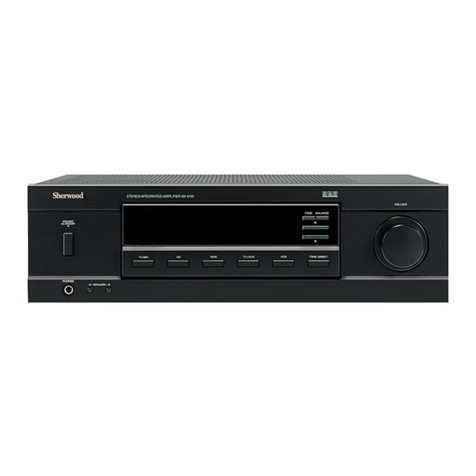
Sherwood
Sherwood AX-4103 operating instructions
